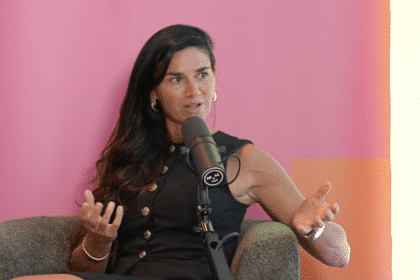As Alexandra Smit, digital marketing and automation specialist at Cheetah Digital, discusses in this article…
In an increasingly digitised competitive and omnichannel environment, consumers are becoming increasingly careful, informed, sophisticated, and demanding when it comes to their shopping interactions. At the same time, they’re also far less tolerant of sub-standard shopping experiences, both online and in-store.
Their data privacy expectations have also risen exponentially, causing brands everywhere to face their biggest challenge yet — balancing customers’ desires for personalised interactions while fiercely protecting customer privacy.
Recently, I had the opportunity to speak at the Digital Leadership Forum (DLF), conducted in partnership with BPP, where we discussed the above digital customer trends in the APAC region.
The privacy paradox
What became clear was this concept of ‘privacy paradox’. Consumers are really skeptical about how brands are using their data. Facebook has only added fuel to the fire with the controversy surrounding it in recent years.
In Australia, our 2022 Digital Consumer Trends Index revealed that 63 per cent of consumers do not trust these platforms with their data. Now, of course, that doesn’t mean they’re not using these platforms. They’re just treating them with a healthy dose of skepticism.
For example, a whopping 86 per cent of consumers said they wanted to see brands spend more on their loyalty offering and less on Facebook advertising. Interestingly, there has also been a large positive sentiment for brands that have pulled ads from Facebook altogether because of concerns about the rise of harmful content. Consumers know the value of their data. As a result, they’re being increasingly protective of it.
Who is getting it right?
When I think of a really tremendous example of digital transformation and acceleration, I think of our customer Purebaby. In a very short period of time, the Australian company underwent an incredible transformation.
Previously, Purebaby relied heavily on brick-and-mortar stores to drive revenue. Its online offering was just a secondary thought. That is until COVID-19 came to be. When it hit, Purebaby rapidly and successfully pivoted, resulting in roughly 90 per cent of its revenue coming in from online sales. It has completely changed the brand’s business and business model forever.
The great thing about this transformation success story is that to bolster its online experience, Purebaby shifted from focusing on purely promotional marketing to building up robust lifecycle programs. To give you some context, Purebaby set up 22 email programs within the space of just 18 months.
The brand did this to ensure the online experience was seamless for its new demanding digital customers. Purebaby provided different touch-points that were more triggered and personal than ever before. So when you look at how digital acceleration is changing the way consumers engage, it essentially comes down to the fact that they’re becoming more careful, and therefore, require brands to earn their trust.
Beefed up GDPR (General Data Protection Regulation)
Life is about to change big time for APAC marketers. As we all know, the General Data Protection Regulation (GDPR) is a regulation in EU law on data protection and privacy. The model is being adopted for the APAC region as well, leading to the death of the cookie.
This means brands and companies are at risk of facing regulatory penalties and lawsuits if they don’t adhere to the new privacy requirements. Even more, companies can no longer assume that if they cannot identify someone through an IP address that the law won’t apply to them. Because it will. As marketers, we need to be more cautious than ever in our approach to treating unknown users.
The question is, are we ready for this change?
Cosy-ing up with consumer expectations
We’ve established that consumers have the expectation for brands to know them. But what they’re comfortable with is a different story. Our research shows that most people actually want a consistent experience regardless of whether they interact online or in-store.
Consumers want messages that recognise their shopping history. They want their data to be used in ways that make them feel comfortable and like an individual. So don’t send them irrelevant content or offers based on information they haven’t directly shared with you — that’s considered creepy.
5 ways to survive a cookie-less future:
- Stop renting data: Build your own databases through direct-consumer relationships. Have a robust data-collection strategy to support this. And know that the data you need to market to individuals with the right level of relevance and privacy doesn’t come easily. It requires a strategy that incentivises consumers to tell you about themselves willingly, with the permission to use that data.
- “Know them and show them”: Consumers expect digital interactions that are immediate and highly relevant to them. They have real-time expectations and think you should “know them and show them” how well you understand them. This requires a single view of the customer with preferences and insights that can be used for decisioning in the moment to drive engaging experiences anywhere your customer interacts with you.
- Devise a loyalty initiative: Not every brand needs a loyalty program. But every brand does have to provide some sort of value exchange. Well-executed interactions across channels help customers feel a connection, and that connection leads to them reciprocating with purchases and eventually, loyalty to your brand.
- Know the rules of engagement: Consumers expect to engage with you on different devices. In fact, today’s consumers use an average of nearly six touch-points, with half of them regularly using more than four when engaging with a brand.
- Create a craving: When customers want to participate in your loyalty program, you need to do more than incentivise transactions. You want to reward them for behaviours as well. Loyalty program management is vital to keep customers coming back for more.
At the end of the day, it’s essentially a value exchange. Our research reveals that 55 per cent of consumers are comfortable with sharing data with brands in exchange for better service. So if you want to know more about the consumer, figure out what you can give them in return for that information.
Use those aspects to gain additional insight into your consumer, understand your audience better, and then target them, using the data in a way that they find relevant and useful.
The key takeaway is, when you know individuals and can market to them with personalised experiences that they welcome — not because you snooped on them — magical things happen.
Discover more about these trends and what it takes to future-proof your marketing strategy here.








